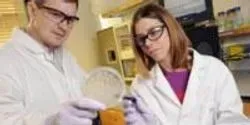clinical research

In a first step toward future human therapies, researchers at The Saban Research Institute of Children’s Hospital Los Angeles have shown that esophageal tissue can be grown in vivo from both human and mouse cells. The study has been published online in the journal Tissue Engineering, Part A.

A new technique makes it possible to quickly detect the presence of drugs or to monitor certain medical conditions using only a single drop of blood or urine, representing a potential tool for clinicians and law enforcement.

In the race to find more effective ways to treat cancer, Boise State University biophysicist Daniel Fologea is working outside the rules of general mathematics that say one plus one equals two. In his world, one plus one adds up to a whole lot more.

Carnegie Mellon University professor Keith Cook has received a four-year, $2.4 million grant from the National Institutes of Health (NIH) to support research and development of artificial lungs that patients may use long term in the comfort of their own homes while waiting for a lung transplant. Cook, an associate professor in the Department of Biomedical Engineering, will lead the project and collaborate with researchers from the University of Washington, Columbia University and Allegheny General Hospital in Pittsburgh.

A new class of synthetic platelet-like particles could augment natural blood clotting for the emergency treatment of traumatic injuries – and potentially offer doctors a new option for curbing surgical bleeding and addressing certain blood clotting disorders without the need for transfusions of natural platelets.














